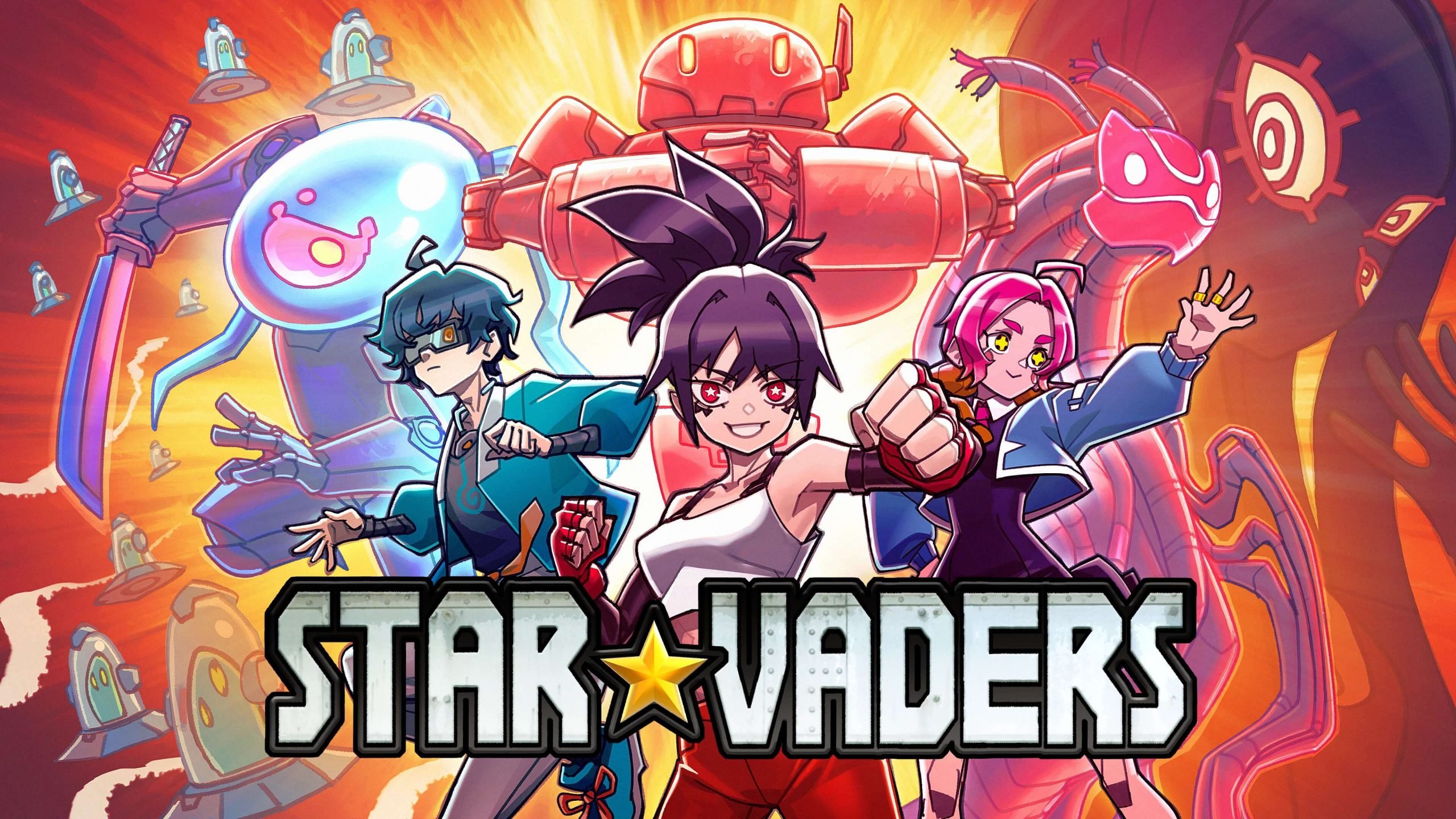It’s quite easy to describe StarVaders on a surface level: think of Space Invaders, think of Slay The Spire, then mash the two together. StarVaders. It’s a tight, snappy experience that innovates as much as it depends on pre-established ideas, wrapped in a sugar candy coating that’s immediately charming and accessible. If you’re a fan of deck-builders in general, not necessarily Slay The Spire, there’s a good chance you’ll want to stick around.

Gameplay
StarVaders is a roguelite deck-builder that, as with other games in the genre, provides players with a gauntlet of combat encounters and climactic boss battles interspersed with expressive customization. Unique cards of varying rarity, upgrades, and powerful passive abilities are all on the table. However, StarVaders is able to offer distinctive play-styles with its unique structure and clear dedication to variety.
In the game, players control one of three distinctive mechs, each with their own unique strengths and weaknesses. There’s even a slew of unique pilots to unlock and choose from, too. This does keep gameplay diverse, though I will say a good run can still get a bit repetitive once a flow is found. There are a few choices that are just too easy to make; which cards to take, which upgrades, which combat encounters – what rewards do I prioritise? Unfortunately, the decision-making rarely felt difficult outside of combat.
As mentioned, StarVaders takes ample inspiration from Space Invaders. This will be immediately noticeable to anyone familiar with the classic arcade game, but StarVaders borrows from it sparsely; enemies tumble from the top of the screen to the bottom, providing an impending doom that must be avoided. This is, by and large, the only similarity. However, it’s a big one, and working around this structure gives StarVaders a tremendously unique look and feel. The whole flow of the game is unique, and offers a rising tension that’s ever-present.

Challenge is somewhat absent at first, with the starting difficulty holding back a little too much. On the other hand, the hardest difficulty provides an instant and at-times frustrating challenge. StarVaders provides players with card choices at the start of each run and, on the hardest difficulty, making the wrong choice can make it easy to lose immediately.
Multiple times, I was thrust into introductory encounters that were hard to overcome with my basic cards, yet on other occasions, I’d breeze through the game from the first encounter to the last. All on the same difficulty. While sometimes frustrating, this at-times immediate challenge on the harder difficulties provides an instant tension that’s missing from most modern roguelikes; the threat of losing from the get-go is present and, as a result, a run of StarVaders rarely feels like a slog.
All that said, the combat does feel quite swingy – I found myself quite frequently bouncing between decimating the enemy or fighting tooth and nail. I’m not sure I’d call it a complaint, but it’s certainly an acquired taste. One issue I do have with the game’s hardest difficulty is its modifiers, which add extra challenges to each encounter. I found these challenges to be rather imbalanced, offering everything from limited choices to more powerful enemy abilities. It’s not a dealbreaker, but it’s usually an easy choice.
Story
The story of StarVaders is fairly inconsequential, with small nuggets of narrative being dished out on either end of a given run. It’s serviceable as flavouring but, as with many roguelikes/roguelites, not the main course. Thankfully, it doesn’t get in the way of the gameplay, allowing each run to play at a steady clip. Make no mistake, though, an effort has been made to provide players with a narrative structure and overall theme.
Visuals, Sounds, and Music

If StarVaders does one thing well, it’s visuals. Not only is the minimalist, cartoon presentation an immediately charming approach, but it excels with tremendous clarity. The board space is always easy to read, bolstered by a smooth and intuitive user interface that provides all the information necessary. I rarely, if ever, found myself confused while playing StarVaders, and the clarity of its visuals is a big reason why. And this total lack of friction results in a refreshingly fast-paced experience, practically action-packed once you’re familiar with the game’s basic concepts.
In keeping with its arcade tone, StarVaders’ background tunes provide a buoyant soundtrack, offering a steady beat and subtle melodies that match the pace. It rarely, if ever, gets in the way and offers ample – if somewhat forgettable – background. Sound design is also simple but efficient, offering a well-balanced mix of satisfying sounds that complement the gameplay. I experienced no sharp noises or sudden spikes of volume; it’s a well-rounded soundscape that simply does its job.
Performance & Settings
I had no issues with StarVaders, and it performed admirably across the board. Options are minimal, but sufficient. One thing of note is the addition of an assist mode that grants players extra card draw and energy. Another welcome option is full control over grid and card animation speed, allowing players to speed up or slow down the flow of the game. There’s even a speedrun timer, if you’re into that.
Conclusion
Each run of StarVaders flew by for me, even when I was finding it too easy or experiencing frustrations with its swinging balance. It’s a tightly designed, snappy title that offers accessible gameplay, but it still manages to provide a diverse sandbox of strategies to play in.
Fans of Slay The Spire and similar deck-builders will likely be surprised by how different StarVaders feels, but that’s just another reason to check it out. More experienced players may find the game a little easy at first, but fans of its core mechanics will quickly find a crunchy arcade-infused challenge to sink their teeth into.







